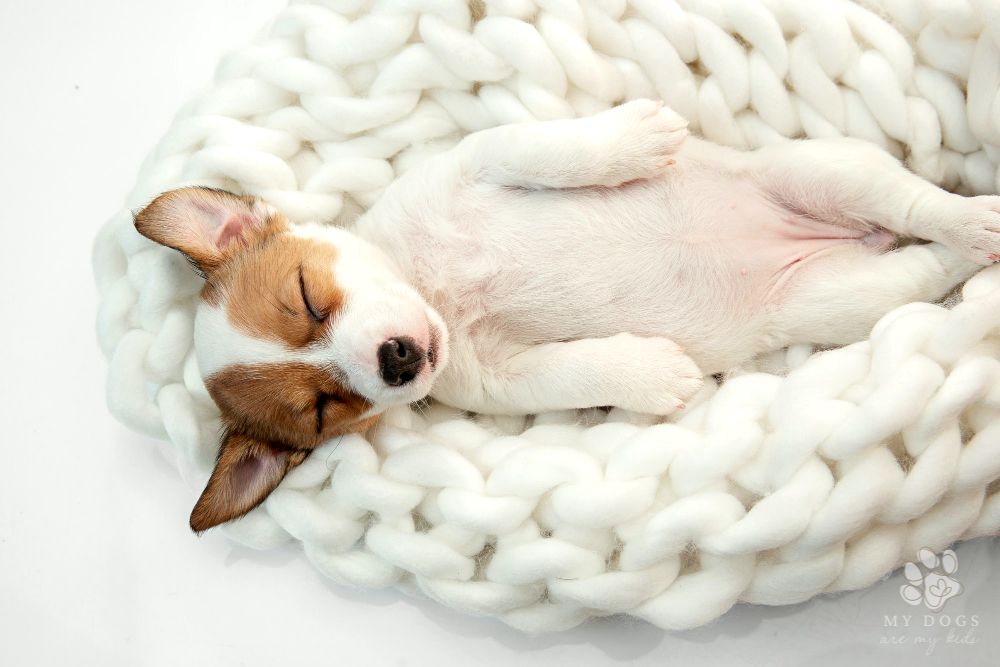Dog Belly Buttons: The Great Debate
This post may contain affiliate links, which means I’ll receive a commission if you purchase through my links, at no extra cost to you. We are a participant in the Amazon Services LLC Associates Program, an affiliate advertising program designed to provide a means for us to earn fees by linking to Amazon.com and affiliated sites.
Dogs are one of the most popular pets in the United States, with millions of households including at least one dog.
Given their popularity, it’s not surprising that there is a lot of misinformation out there about dogs.
Disclaimer: The medical/health information is provided for general informational and educational purposes only and is not a substitute for professional advice. Read more.
For example, many people believe that dogs do not have belly buttons. This belief is likely based on the fact that dogs don’t have the same type of belly button as humans.
Humans have a small, hard knob that sticks out from the stomach. Dogs, on the other hand, have a small indentation in their stomachs where the umbilical cord was once attached.
So, do dogs have belly buttons?
Technically, yes.
However, they are much less visible than human belly buttons, which is likely why many people believe that dogs don’t have them.
In a similar fashion to human babies, when a puppy is born, it is attached to its mother’s milk supply by the umbilical cord.
The umbilical cord is attached to the mother’s placenta. The placenta is a organ that provides oxygen and nutrients to the developing fetus.
The umbilical cord is also attached to the puppy’s stomach. This connection allows the transfer of nutrients from the mother’s milk to the puppy.
After the puppy is born, the umbilical cord is cut and a small stump is left. This stump eventually dries up and falls off, leaving a small scar. This scar is the puppy’s belly button.
But, Do ALL dogs have belly buttons?
Depending on how you define a “belly button,” the answer may be yes, no, or somewhere in between.
When most people think of a belly button, they’re thinking of an “innie.” This is a small depression in the center of the stomach, typically surrounded by a small amount of raised flesh.
This is the type of belly button most humans have.
However, not all animals have innies. Some have “outies,” which are raised bumps on the stomach. Others have a combination of the two, or something else entirely.
So, the answer to the question really depends on how you define a belly button.
If we’re just talking about a small depression in the center of the stomach, then the answer is no, not all dogs have belly buttons.
However, if we’re talking about any kind of raised flesh or bump on the stomach, then the answer is yes, all dogs have belly buttons.
So, it really all comes down to how you define the term. As with many things in life, the answer to this question is not as simple as a yes or no.
What do dog belly buttons look like?
When it comes to dog belly buttons, there are a few different types that you might see.
The most common type of dog belly button is an ‘umbilicus‘, which is simply a small scar where the umbilical cord was once attached.
You’ll also see what’s called a ‘vestigial‘ umbilicus, which is basically a small protrusion that’s leftover from the umbilical cord.
And finally, there are ‘innies‘ and ‘outies‘. Innies are belly buttons that are slightly indented, while outies are slightly protruding.
So, what does all this mean for you?
Well, not much, except that you might see a slightly different belly button on your dog than you would on another dog.
5 ways to tell if your dog’s belly button is healing properly
Now, as far as belly button care goes, there’s not much that you need to do. You don’t need to worry about cleaning it or anything like that — just let it be. In fact, the less you mess with it, the better.
Here are things to look for:
- Check for redness, swelling, or discharge: The area around your dog’s navel should not be red, swollen, or have any discharge. If it does, this could be a sign of infection.
- Look for scabbing or crusting: If you see any scabbing or crusting around your dog’s navel, this could be a sign that the area is not healing properly.
- Check for pus or blood: If you see any pus or blood coming from your dog’s navel, this is a sign of infection and you should take them to the vet immediately.
- Feel for warmth: If the area around your dog’s navel is warm to the touch, this could be a sign of infection.
- Check for pain: If your dog is acting uncomfortable or in pain when you touch their navel, this could be a sign that something is wrong.
Of course, if you notice any of the signs above, then you should call the vet, as this could be a sign of infection. Other than that, though, there’s not much to worry about when it comes to dog belly buttons!

